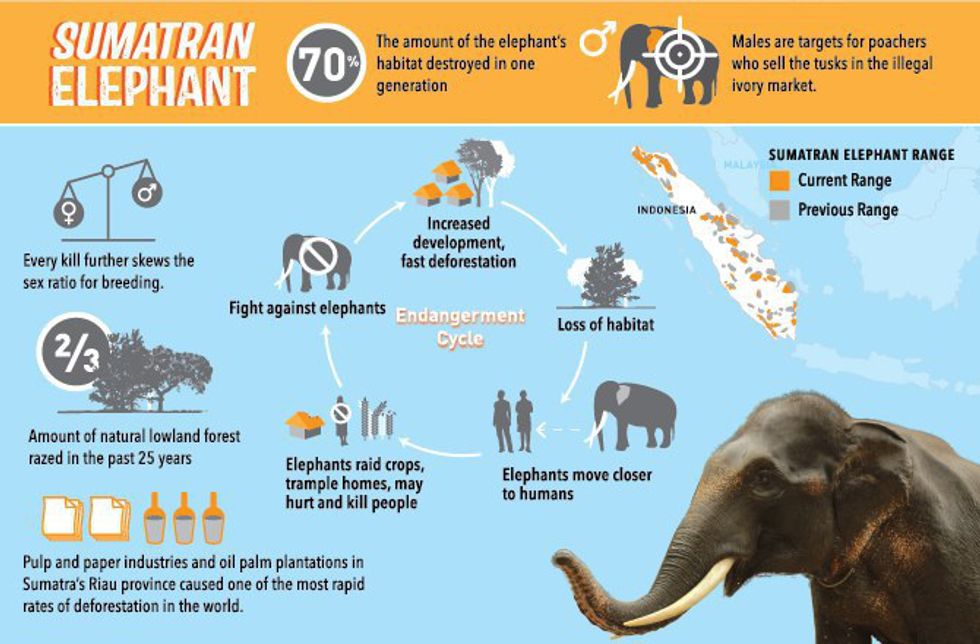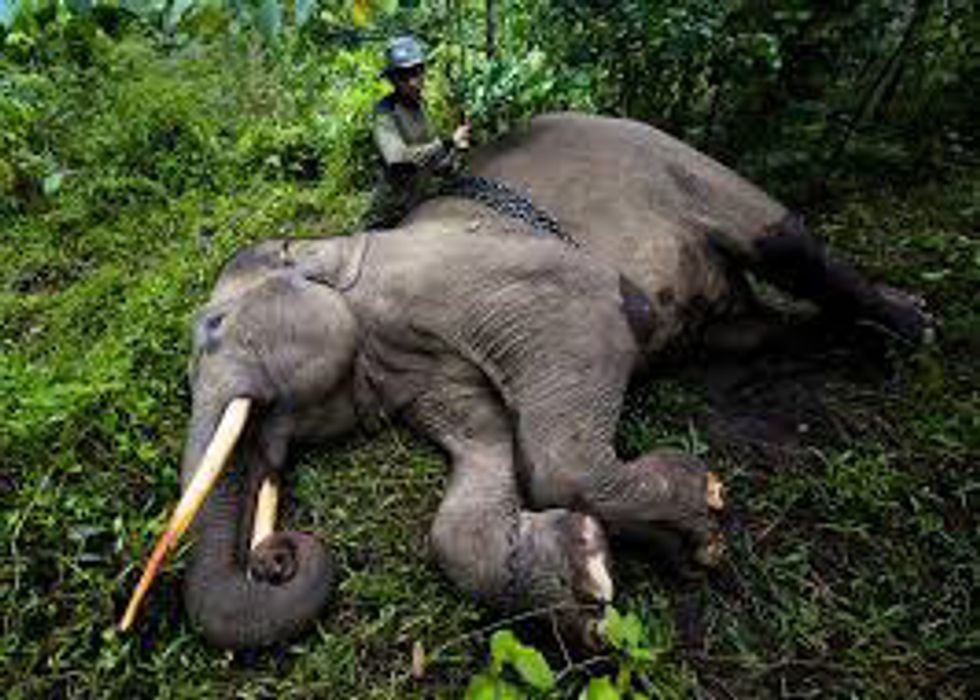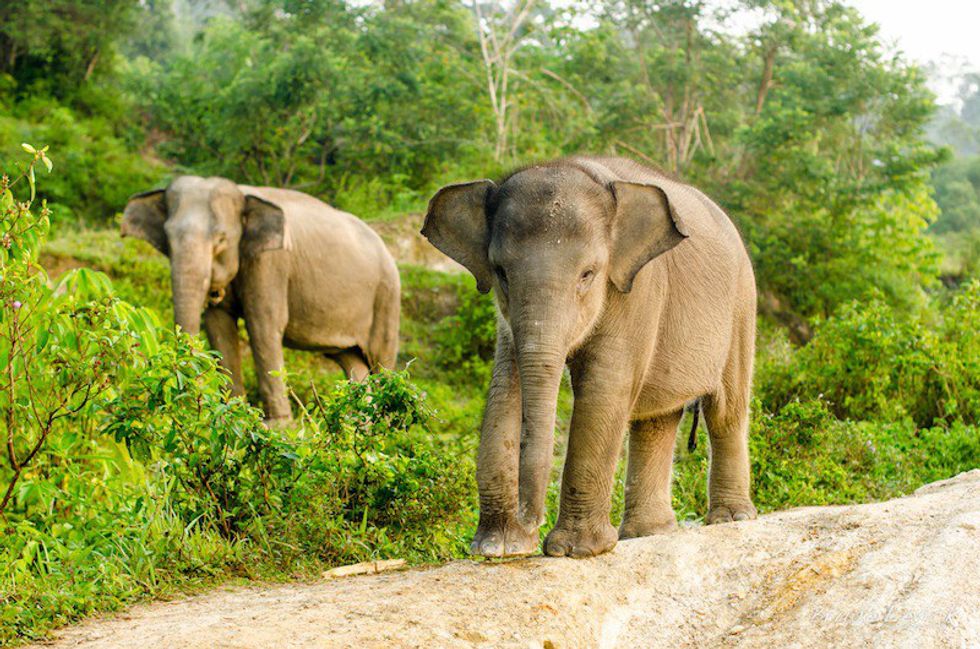According to the World Wildlife Foundation, the Sumatran elephant is one of our planet's most critically endangered species. The Sumatran elephant is a subspecies of the more widely known Asian elephant and is located in Indonesia and the island of Sumatra. The Sumatran elephant was declared critically endangered four years ago in 2012. Over the course of the past 70 years, the population of these amazing creatures has declined by an estimated 80 percent, leaving the species on the brink of extinction.
The Sumatran elephant faces many threats that has and continues to put its existence in jeopardy including poaching, deforestation, and human contact. Elephants are poached primarily for their tusks, which sell for an extremely high value on the black market. In Asian elephants, including Sumatran elephants, only males have tusks. This means that only males are poached for their tusks, leaving the male to female ratio completely unbalanced which makes for difficulty in reproducing. Deforestation has caused devastating effects on the Sumatran elephant as well. Over 70 percent of the animals habitat has been destroyed within its last generation, leaving the Sumatran elephants with nowhere to thrive. Human conflict is another huge threat to the Sumatran elephants existence. Since the elephants have little to no land of their own, they are pushed onto land occupied by humans which ultimately leads to them being killed.
The World Wildlife Foundation is doing many things to help the Sumatran Elephant fight extinction. WWF and its local partners have teams up to form wildlife patrol units, which fight poaching and the illegal trade of animal parts including the highly values ivory tusk. The World Wildlife Foundation is also helping animals escape human conflict by steering the animals away from farms and other areas populated by people in order to keep them in the forest and away from potential threats. In 2004 the Tesso Nilo National park was declared a protected area from the Sumatran elephants and is one of the last places left for the animals to thrive with no threats to their well-being. The World Wildlife Foundation is working with local authorities, palm oil companies, the pulp and paper industry, and conservation organizations to ensure the Sumatran elephant can continue to live in their habitat without disruption.
In the midst of the sixth mass extinction and a time where species are threatened and killed everyday, we must do everything in out power to help these amazing creatures thrive on Earth. With the help of the World Wildlife Foundations along with many other amazing conservation groups and people like you, we can stop putting species on the brink of extinction and start learning how to peacefully coexist with amazing creatures like the Sumatran elephant.
If you want to learn more about the Sumatran elephant and the threats it faces, you can visit https://www.worldwildlife.org/species/sumatran-ele....






















